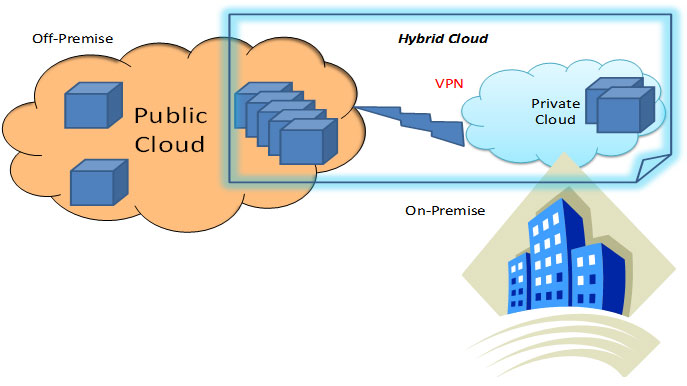There are three main deployment models in Cloud Computing.
1.Private Cloud:
- A private cloud hosting solution, also known as an internal or enterprise cloud, resides on the company’s intranet or hosted data center where all of your data is protected behind a firewall.
- This can be a great option for companies who already have expensive data centers because they can use their current infrastructure.
- You go for a private cloud when you have strict security and data privacy issues.
- Cons: The main drawback people see with a private cloud is that all management, maintenance, and updating of data centers is the responsibility of the company.
2. Public Cloud:
- These are the clouds which are open for use by the general public and they exist beyond the firewall of an organization, fully hosted and managed by vendors.
- Your data is stored in the provider’s data center and the provider is responsible for the management and maintenance of the data center.
- Because you are sharing computing resources among a network of users, the public cloud offers greater flexibility and cost savings.
- This is a good option if your demand for computing resources fluctuates. You have to purchase the capacity on the basis of usage and can scale up or scale down server capabilities based on traffic and other dynamic requirements.
- This type of cloud environment is appealing to many companies because it reduces lead times in testing and deploying new products.
- Cons: They are more vulnerable than private clouds and there is no control of resources used or who shares them.
- Note: Even though you don’t control the security of a public cloud, all of your data remains separate from others and security breaches of public clouds are extremely rare.
3.Hybrid Clouds:
- They consist of external and internal providers, namely a mix of public and private clouds.
- Secure & critical apps are managed by an organization and the not-so-critical & secure apps by the third party vendor. For example, you can use a public cloud to interact with the clients but keep their data secured within a private cloud. Most companies are now switching to Hybrid clouds.
- Ideal in situations where you have planned is to migrate to a complete cloud solution as existing hardware expires or you have some applications or hardware that are not ready for the cloud.

Advantages and Disadvantages of Public Cloud
Advantages of Cloud Computing:
- Lower Computer Cost.
- Improved Performance.
- Reduced Software Cost and Instant Software Updates.
- Unlimited Storage Capacity.
- Universal Document Access.
- Increased data reliability.
- Device Independence.
Disadvantage of Cloud Computing:
- Requires a constant Internet connection.
- Does not work well with low-speed connections.
- Features might be limited based on the provider you choose.
- Can be slow.
- Stored data might not be secure.
- If your data is stored abroad whose policy do you adhere to?

